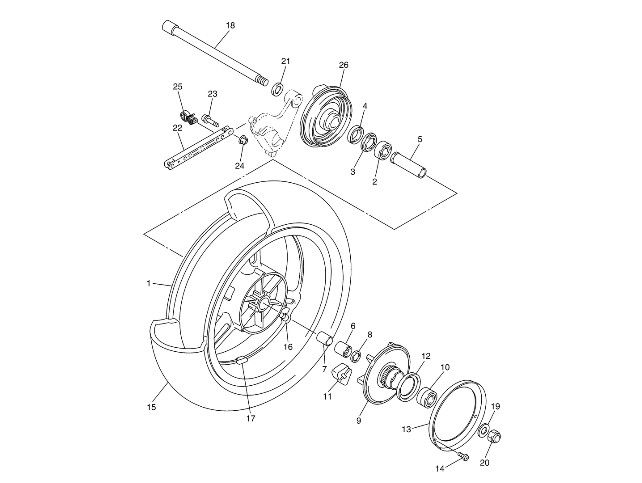Bustanut joker
Well-known member
Bluesy hit on you while you was taking a leak?

Little of this makes any sense. You "increase(d) the size at bearing race" by boogering up the bearing race??? That's crazy talk!Thanks for further feedback. I have gone over rear swing arm shaft. Had slight movement so I increased the size at bearing races eliminating the play. Equivalent to knurled at bearing races. Seldom ride in rain! Micrometer good idea but when I put axle through the wheel and can move it up and down in the inner race of the bearing you know axle shaft is too small. Yes axle is sloppy in the hole. Both issues present - improved them by increasing size of shaft at bearing races.
What I have not done is increased the size of the total axle.








Some pictures would help solve this quickly.2010 FJR 1300 - Issues I have been dealing with: undersized rear axle, side play in rear wheel, front fork bushings were replaced under warranty because they were worn out, have balanced and rebalanced both wheels several times as well as tire replacements and further rebalance, replaced front bearings and installed tapered rollers in the headset... still have imbalance at 75mpgMPH on up. Checked both wheels with dial gage indicator - o.k. Anyone experienced similar issues.
Huh! ???Thanks for further feedback. I have gone over rear swing arm shaft. Had slight movement so I increased the size at bearing races eliminating the play. Equivalent to knurled at bearing races. Seldom ride in rain! Micrometer good idea but when I put axle through the wheel and can move it up and down in the inner race of the bearing you know axle shaft is too small. Yes axle is sloppy in the hole. Both issues present - improved them by increasing size of shaft at bearing races.
What I have not done is increased the size of the total axle.
+1. The axle is not intended to be a perfect fit. There is a problem, but it's not likely the axle. If knurling the axle to fit the bearing inner race better improves the condition, then something is preventing all the spacers and bearings from be torqued squarely and securely together.When you torque the axle nut you should be compressing the entire stack of spacers, washers and inner bearing races. If you feel slop at the wheel rim (in reference to the swing arm) after torquing the axle nut up the most likely problem is the bearings themselves being sloppy. The axle isn't likely to be moving around inside of those spacers or inner bearing races with 90 lb-ft of torque being applied.
Won't the rear wheel have excessive movement if the rear axle spacer and washer are flipped? Although, I can't imagine it would be enough movement to cause the issues you're reporting.When you torque the axle nut you should be compressing the entire stack of spacers, washers and inner bearing races. If you feel slop at the wheel rim (in reference to the swing arm) after torquing the axle nut up the most likely problem is the bearings themselves being sloppy. The axle isn't likely to be moving around inside of those spacers or inner bearing races with 90 lb-ft of torque being applied.
Not sure I'm visualizing what you mean here. The axle can only be inserted from the right side of the bike (you know that). The stack of things it passes through that fit on the smaller diameter of the axle shaft are (in this order):Won't the rear wheel have excessive movement if the rear axle spacer and washer are flipped?
Correct. I'm talking about the washer that goes between the caliper and the wheel (if I remember right) and the spacer that goes between the right swing arm and the caliper.Not sure I'm visualizing what you mean here. The axle can only be inserted from the right side of the bike (you know that). The stack of things it passes through that fit on the smaller diameter of the axle shaft are (in this order):Won't the rear wheel have excessive movement if the rear axle spacer and washer are flipped?
Washer, brake caliper, ABS sensor plate, wheel assembly, final drive assembly (left side swingarm), washer & nut.
Inside the wheel assembly are the wheel bearings on either end separated by some internal spacers so you aren't pinching the inner races of the bearings. The right side swingarm is the larger diameter of the axle, so it isn't compressed by the axle torque.
